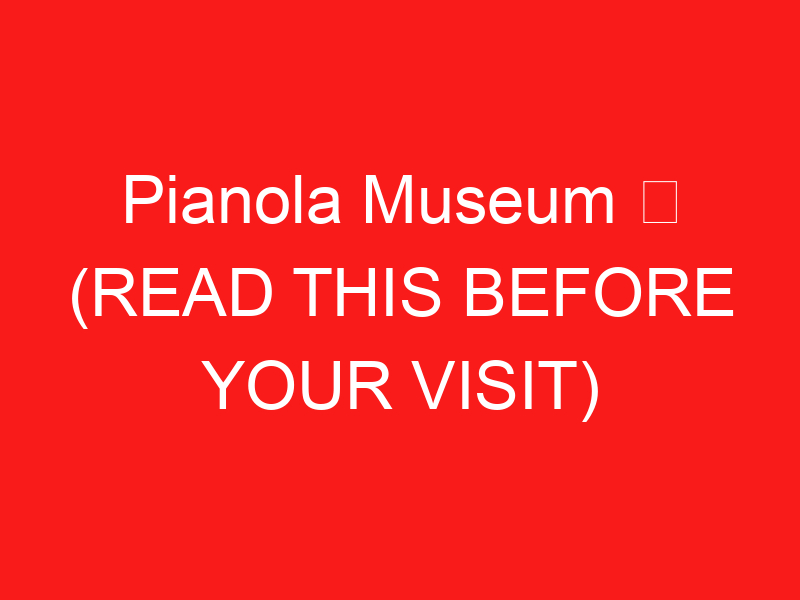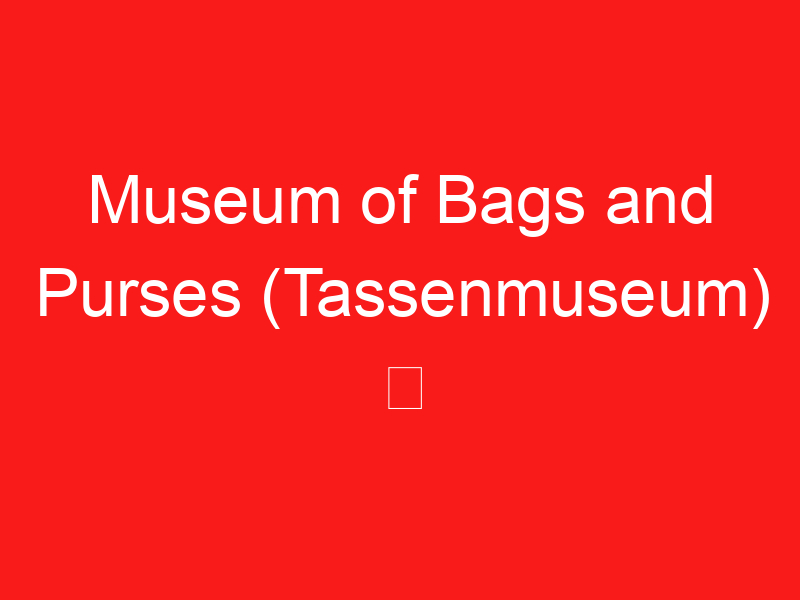Pianola Museum ➥ (อ่านสิ่งนี้ก่อนเยี่ยมชม)
Welcome to the enchanting world of the Pianola Museum, a hidden gem that celebrates the unique charm of mechanical music. If you’ve ever been captivated by the sound of a player piano or wondered how music could be played without a human touch, this museum is a must-visit destination. ตั้งอยู่ใจกลางอัมสเตอร์ดัม, the Pianola Museum offers a fascinating journey through the history of automated music, showcasing an impressive collection of player pianos and mechanical instruments.
ในบทความนี้, we’ll delve into the intricacies of the Pianola Museum, exploring its exhibits, the experience of visiting, and key insights that will enhance your visit. Whether you are a music lover, a history enthusiast, or simply curious about this unique form of entertainment, there’s something here for everyone. ดังนั้น, let’s embark on this melodic adventure!
The History of the Pianola Museum
The Pianola Museum was founded in 2006 by a passionate collector and music aficionado, Frits B. van der Meer, who dedicated his life to preserving the legacy of mechanical music. The museum is home to an extensive collection of player pianos, music rolls, and other mechanical instruments that date back to the late 19th and early 20th centuries.
Player pianos, often referred to as pianolas, revolutionized home entertainment during their heyday. These instruments allowed individuals to enjoy live music in their homes without the need for a trained pianist. The museum showcases various models, including the iconic Aeolian และ Wurlitzer player pianos, each with its own unique story and charm.
One of the most captivating aspects of the museum is its dedication to preserving not just the instruments but also the music that accompanied them. The museum houses an impressive library of music rolls, which are essential for the operation of player pianos. Visitors can explore these rolls, learning about the composers and songs that defined the era.
นอกจากนี้, the museum frequently hosts live demonstrations, where visitors can witness the magic of these mechanical instruments in action. This interactive experience is a highlight for many, as it brings the history of the pianola to life in a way that mere displays cannot.
What to Expect When Visiting the Pianola Museum
When you arrive at the Pianola Museum, you’ll be greeted by a warm and inviting atmosphere. The museum is relatively small, making it an intimate experience where you can appreciate each exhibit without feeling rushed. The staff is knowledgeable and passionate about the collection, often eager to share stories and insights about the instruments.
The museum is organized into different sections, each showcasing various types of player pianos and mechanical music devices. You’ll find beautifully restored instruments, complete with intricate designs and craftsmanship that reflect the era they were built in.
One of the highlights of the museum is the opportunity to listen to the player pianos in action. The staff regularly conducts demonstrations, allowing you to hear the rich, resonant tones of these instruments. Whether it’s a lively ragtime piece or a romantic ballad, the experience is sure to evoke nostalgia and wonder.
In addition to the player pianos, you’ll also find other fascinating mechanical instruments, such as mechanical organs และ music boxes. Each exhibit is accompanied by informative plaques that provide context and history, enriching your understanding of the evolution of mechanical music.
Furthermore, the museum often features temporary exhibitions that focus on specific themes or artists, so there’s always something new to discover with each visit. Be sure to check their website for current and upcoming exhibitions to enhance your experience.
Why the Pianola Museum is a Must-Visit Destination
The Pianola Museum stands out as a unique cultural institution for several reasons. First and foremost, it offers a rare glimpse into the past, showcasing a form of entertainment that has largely faded from mainstream culture. In an age dominated by digital music, the museum serves as a reminder of the joy and creativity that mechanical music once brought to people’s lives.
อนึ่ง, the museum’s commitment to education and preservation is commendable. By maintaining a collection of historical significance, the Pianola Museum plays a crucial role in keeping the legacy of mechanical music alive for future generations. Visitors leave with a deeper appreciation for the art of music and the ingenuity of the instruments that made it accessible to all.
For music enthusiasts, the museum offers a treasure trove of knowledge. The opportunity to see and hear these instruments in person is invaluable. The staff’s passion and expertise create an enriching environment where visitors can learn about the technical aspects of player pianos, the history of their development, and the cultural impact they had during their peak.
นอกจากนี้, the Pianola Museum is conveniently located in Amsterdam, making it easy to incorporate into your travel itinerary. Whether you’re a local resident or a tourist, a visit to the museum is a delightful way to spend an afternoon, especially if you enjoy exploring off-the-beaten-path attractions.
Planning Your Visit to the Pianola Museum
Before you head to the Pianola Museum, here are some essential tips to ensure a smooth and enjoyable visit:
| Tip | คำอธิบาย |
|---|---|
| ตรวจสอบเวลาทําการ | The museum’s hours may vary, so it’s wise to check their official website before your visit. |
| Book Tickets in Advance | To avoid disappointment, consider purchasing tickets online, โดยเฉพาะอย่างยิ่งในช่วงฤดูท่องเที่ยวสูงสุด. |
| Join a Guided Tour | Guided tours provide in-depth knowledge and insights that enhance your experience. |
| Participate in Demonstrations | Don’t miss the live demonstrations; they are a highlight of the museum and offer a unique auditory experience. |
| Explore Nearby Attractions | The museum is located in Amsterdam, so plan to visit nearby sites to make the most of your trip. |
| เยี่ยมชมร้านขายของที่ระลึก | Check out the gift shop for unique souvenirs, including music rolls and player piano-related items. |
| Take Your Time | Allow yourself plenty of time to explore the exhibits and soak in the atmosphere. |
Frequently Asked Questions About the Pianola Museum
What is a Pianola?
A pianola is a type of player piano that uses a pneumatic mechanism to play music automatically from music rolls. It allows individuals to enjoy live music without needing to play the instrument themselves.
Are there guided tours available at the museum?
ใช่, the Pianola Museum offers guided tours that provide visitors with detailed information about the exhibits and the history of mechanical music.
Can I play the instruments at the museum?
While visitors cannot play the instruments themselves, the museum staff conducts regular demonstrations where you can hear the player pianos and other mechanical instruments in action.
Is the museum suitable for children?
ใช่, the Pianola Museum is family-friendly and offers an engaging experience for children, especially those interested in music and history.
How long should I plan to spend at the museum?
Most visitors spend about 1 to 2 hours at the museum, depending on their level of interest in the exhibits and demonstrations.
Are there any special events or exhibitions at the museum?
The Pianola Museum regularly hosts temporary exhibitions and special events, so it’s worth checking their website for current offerings before your visit.
Is there a gift shop at the museum?
ใช่, the museum has a gift shop where you can purchase souvenirs related to mechanical music, including music rolls and books.
บทสรุป
The Pianola Museum is a captivating destination that offers a unique glimpse into the world of mechanical music. From its rich history to the enchanting sounds of player pianos, the museum provides an experience that is both educational and entertaining. Whether you’re a local or a traveler, this hidden gem in Amsterdam is worth the visit.
By planning your trip and immersing yourself in the exhibits, you’ll leave with a deeper appreciation for the artistry and innovation behind these remarkable instruments. ดังนั้น, before you set off on your adventure, remember to check the museum’s website for the latest information and prepare for a delightful journey through the melodic past.


























